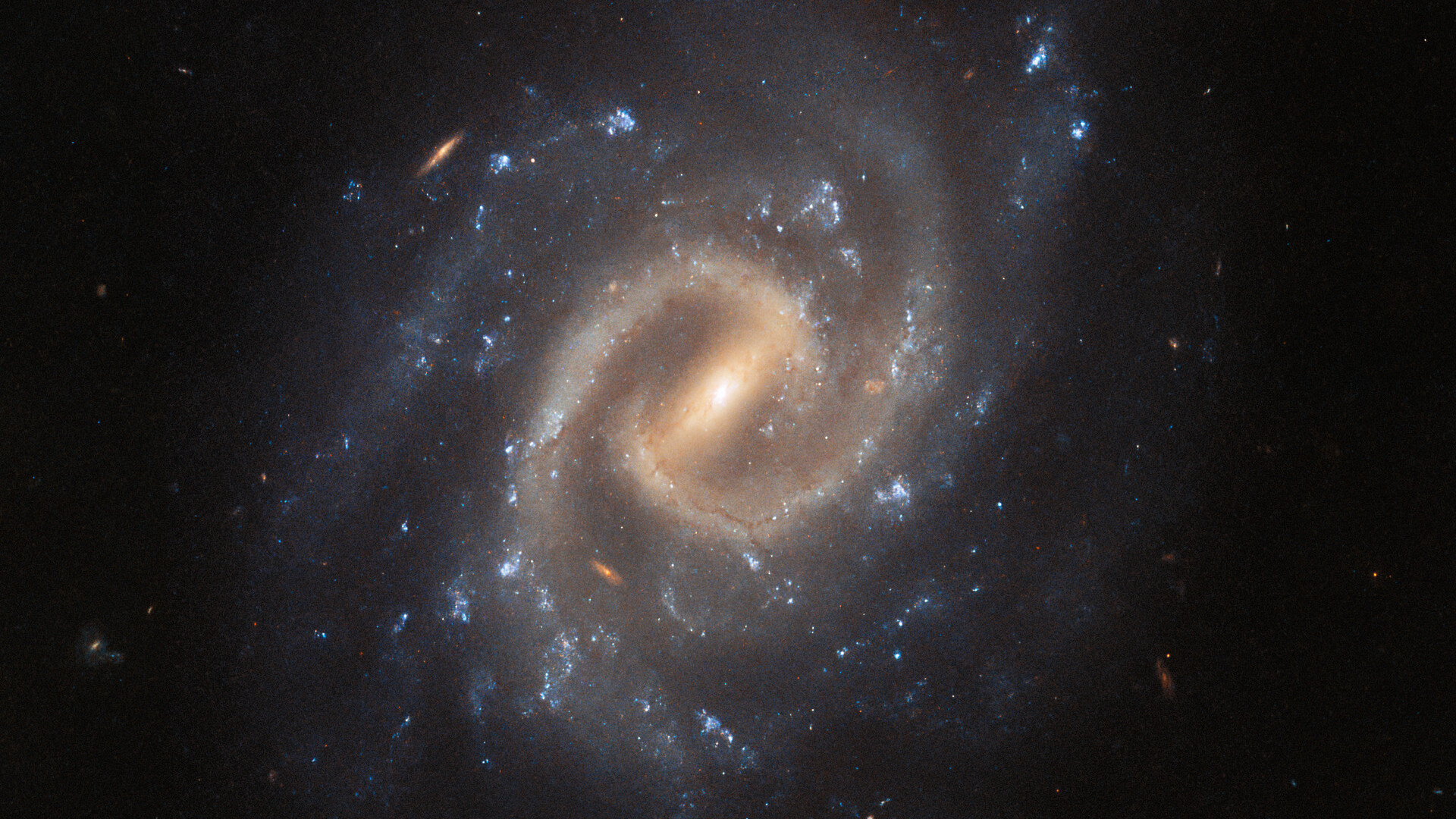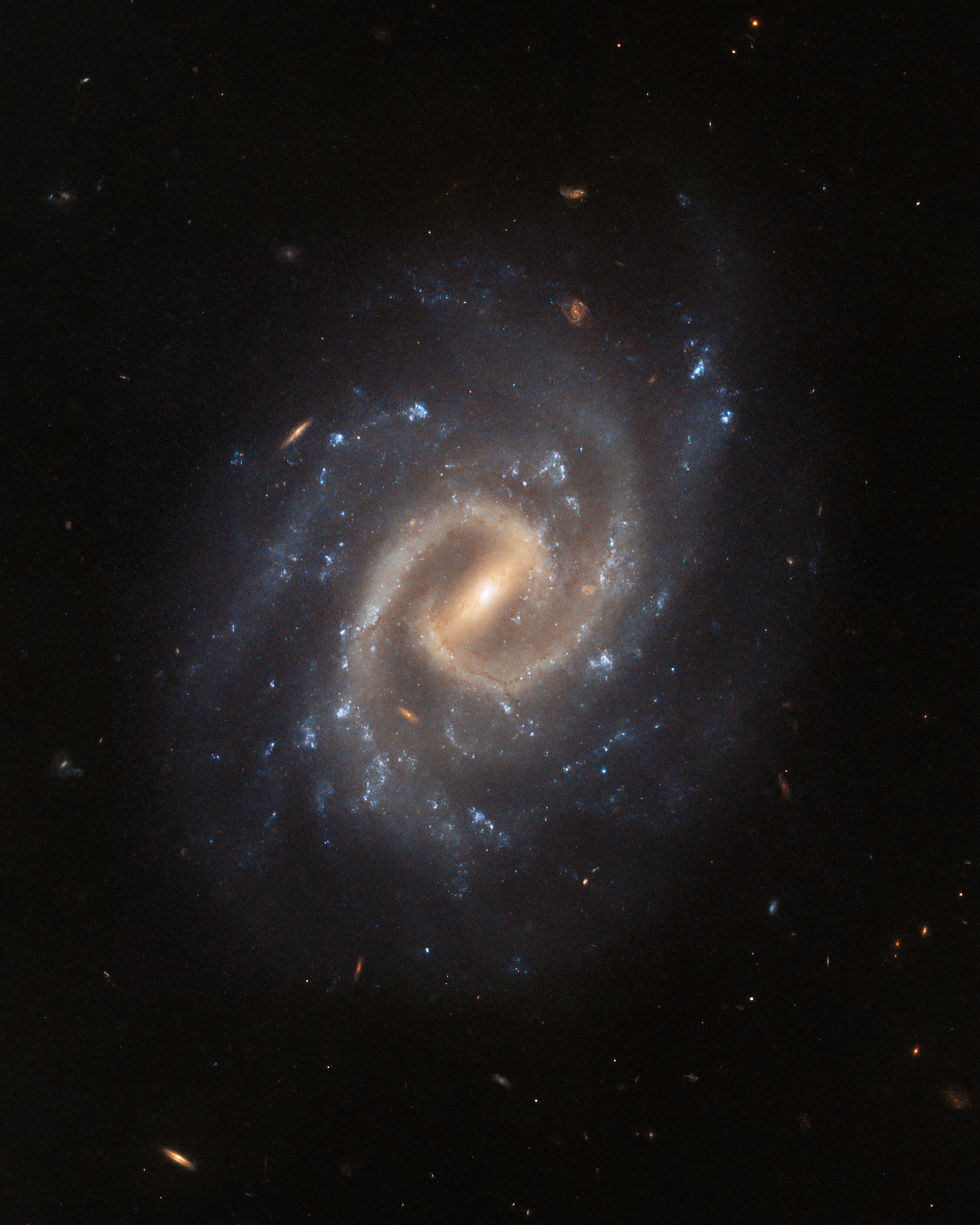
A new image from the Hubble Space Telescope captures a stunning head-on view of a distant galaxy with tightly wound tightly wound spiral arms.
The spiral galaxy, known as UGC 12295, lies approximately 192 million light-years from Earth in the constellation Pisces. While the galaxy appears to "bask leisurely" in space, the Hubble observations show it recently hosted a stellar explosion, also known as a supernova, according to a statement from the European Space Agency (ESA).
"Despite appearing as an island of tranquility in this image, UGC 12295 played host to a catastrophically violent explosion — a supernova — that was first detected in 2015," ESA officials said in the statement. "This supernova prompted two different teams of astronomers to propose Hubble observations of UGC 12295 that would sift through the wreckage of this vast stellar explosion."
Related: The best Hubble Space Telescope images of all time!
When a massive star reaches the end of its life, it dies in a dramatic explosion called a supernova. Supernovas are incredibly luminous and powerful, blasting large amounts of material into space and, as a result, believed to be responsible for forging many of the elements found on Earth.
Using Hubble's Wide Field Camera 3, astronomers examined the debris left behind by the supernova explosion in UGC 12295, along with supernovas in neighboring sites. Observations of supernova remnants can help astronomers better understand the evolution of matter in the universe and the star systems that fuel such cosmic explosions.

"Hubble's keen vision can reveal lingering traces of these energetic events, shedding light on the nature of the systems that host supernovas," ESA officials said in the statement.
The new image from Hubble, which is a joint mission between ESA and NASA, captures the galaxy directly face-on, revealing two distinct spiral arms that extend from a bright central bar. Additional fainter arms branch off from these, studded with bright blue patches of star formation. Smaller, more distant galaxies — likely home to supernovas, too — can be seen in the background of the image, which ESA released on July 24, according to the statement.







